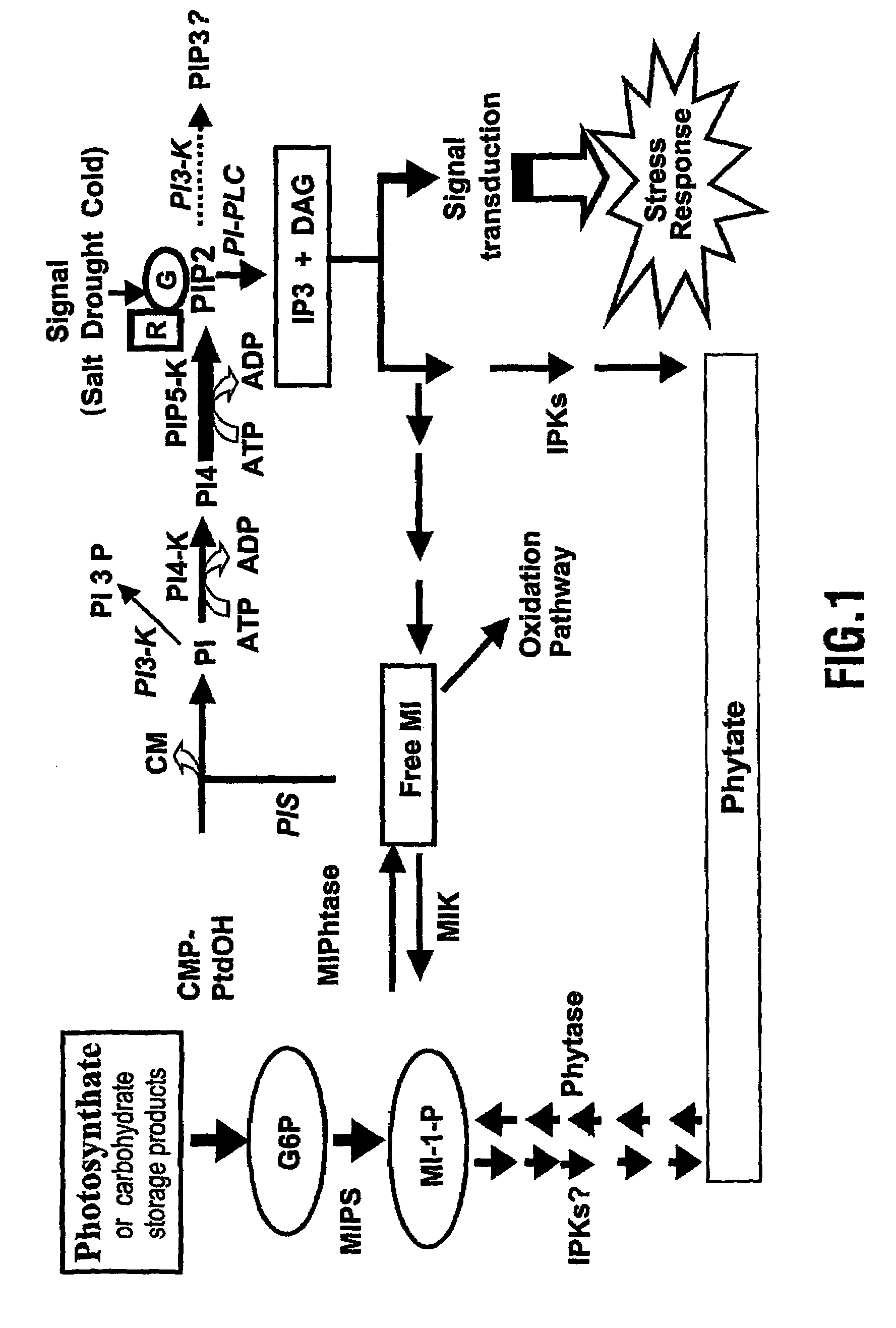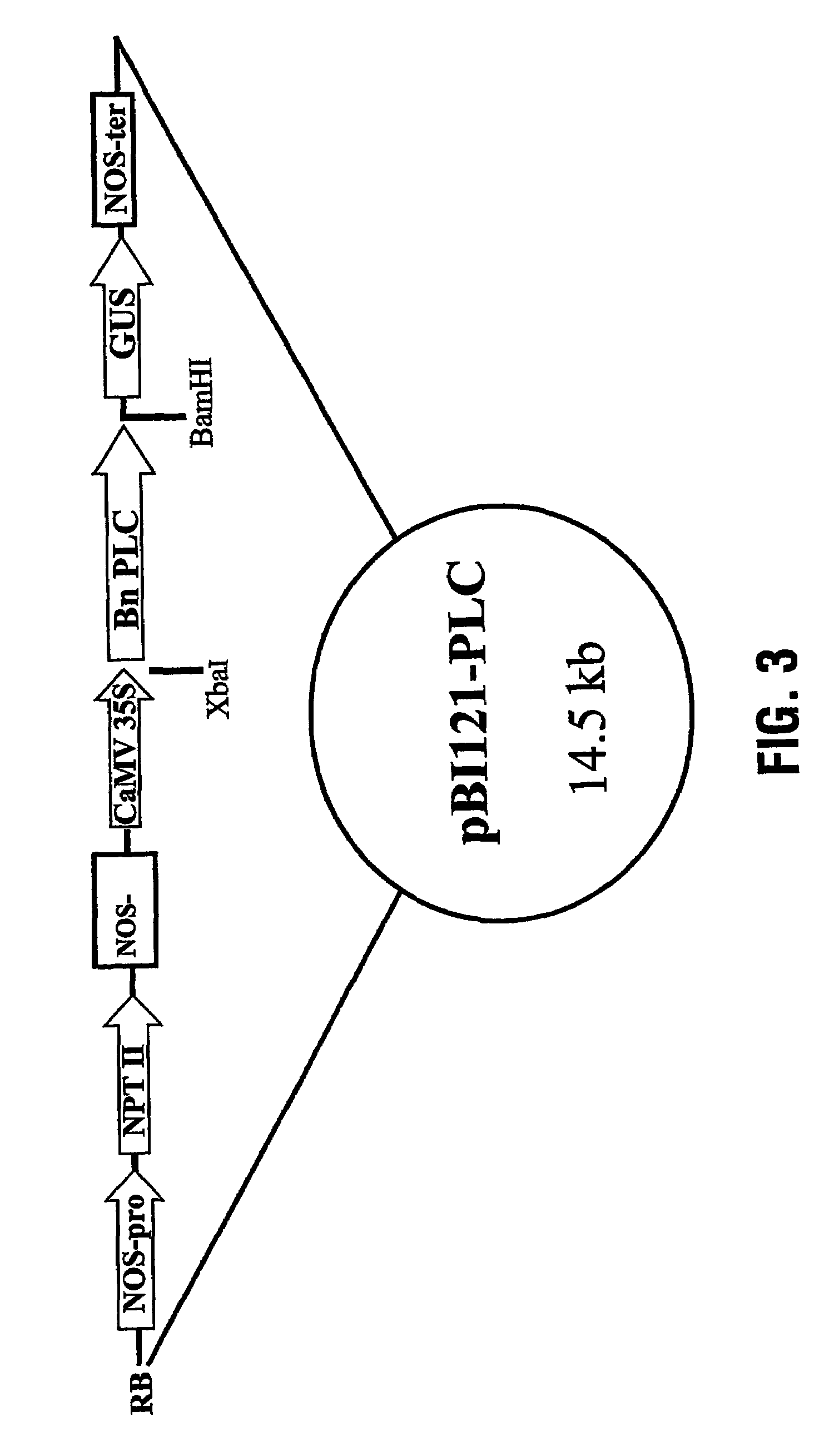Methods for modifying plant responses to stress and correspondingly derived plants
a plant and stress technology, applied in the field of plant stress tolerance, can solve the problems of limiting and least controllable factors, poor performance, severe affecting crop yield, etc., and achieve the effect of increasing the resistance of plants
- Summary
- Abstract
- Description
- Claims
- Application Information
AI Technical Summary
Benefits of technology
Problems solved by technology
Method used
Image
Examples
example 1
Isolation of RNA from B. napus
[0120]RNA was isolated from germinated seeds (3 days old germinated seeds on moistened filter paper in a Petri plate in the dark) using Plant RNA Miniprep method (according to RNeasy Plant handbook for RNA minipreps, 1995). Briefly, the samples were ground to fine powder with mortar and pestle. The ground samples in the microcentrifuge tubes containing lysis buffer were vortexed and spun onto a shredding column for 2 min. Ethanol was added to the flow-through and transferred to a spin column and spun. The column containing RNAs were washed twice with the washing buffer. Finally, RNA was eluted with DEPC-treated water to a new centrifuge tube. The elute containing the total RNA was stored at −70° C. until used.
example 2
Primer Design and PCR Amplification of the Full Length PI-PLC cDNA
[0121]Primers were designed using the heterologous (Arabidopsis) PI-PLC-specific ORF (Hirayama et al., 1997). The forward primer was designed from the 5′ end including the start codon, and the reverse primer from the 3′ end, which included the stop codon. The primers used were: 5′ CATGTCGAAGCAAACGTACAAAGT 3′ (SEQ ID NO: 1) and 5′ ACACAAACTCCACCTTCACGAGAA 3′ (SEQ ID NO: 2). Primers were synthesized in our lab in a DNA synthesizer (Applied Biosystems, 392 DNA / RNA synthesizer) and used to amplify the 1st strand cDNA synthesized from mRNA of the Brassica napus germinated seeds using 1st strand cDNA synthesis kit (Boehringer and Mannheim). An aliquot (5 μL) of the reaction mixture was run in an agarose gel and, as expected, a 1.7 Kb fragment was recovered.
example 3
DNA Sequencing
[0122]A series of primers were designed and used to sequence the PCR-amplified cDNA fragment. Subsequently, the fragment was identified as PI-PLC gene involved in signal transduction and submitted to the GenBank (Accession # AF108123). The gene, as expected, has more than 90% sequence similarity to Arabidopsis PLC gene and very high amino acid sequence similarity to many other plant PLC sequences.
PUM
| Property | Measurement | Unit |
|---|---|---|
| Tm | aaaaa | aaaaa |
| temperature | aaaaa | aaaaa |
| temperature | aaaaa | aaaaa |
Abstract
Description
Claims
Application Information
 Login to View More
Login to View More - R&D
- Intellectual Property
- Life Sciences
- Materials
- Tech Scout
- Unparalleled Data Quality
- Higher Quality Content
- 60% Fewer Hallucinations
Browse by: Latest US Patents, China's latest patents, Technical Efficacy Thesaurus, Application Domain, Technology Topic, Popular Technical Reports.
© 2025 PatSnap. All rights reserved.Legal|Privacy policy|Modern Slavery Act Transparency Statement|Sitemap|About US| Contact US: help@patsnap.com



